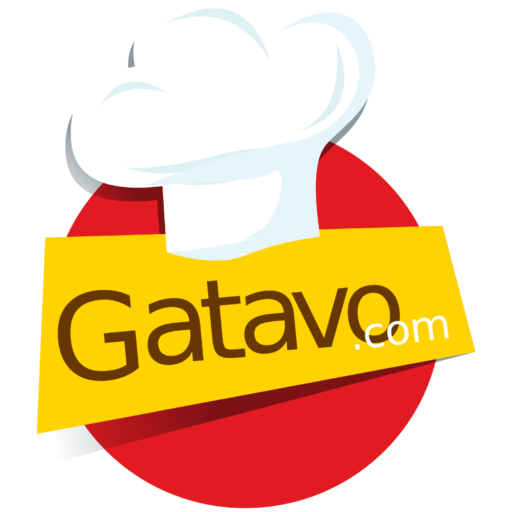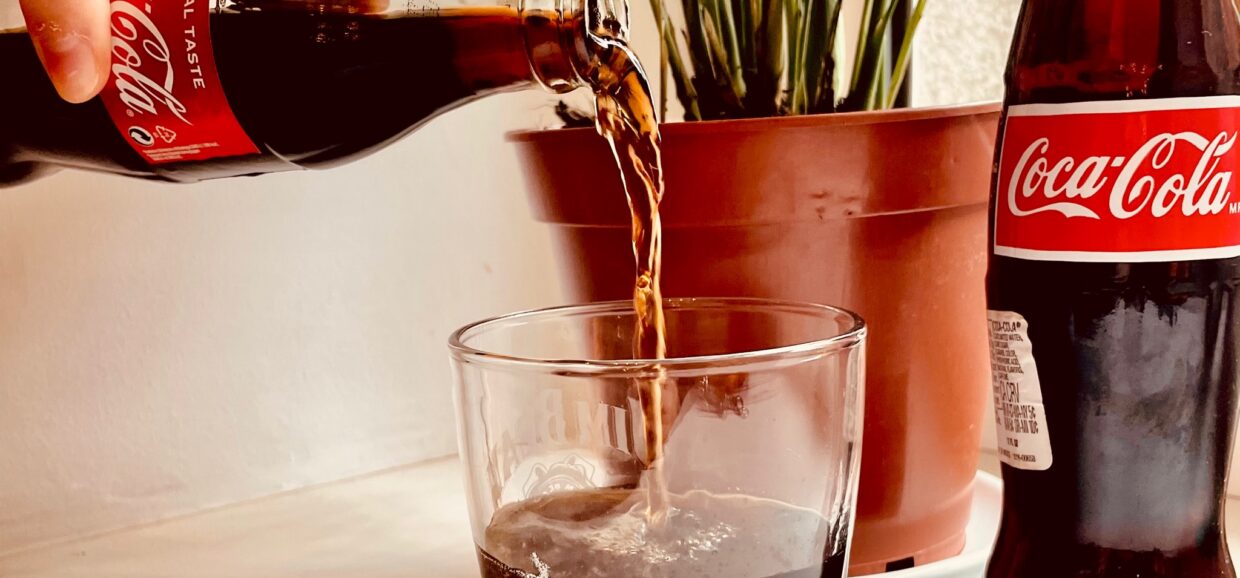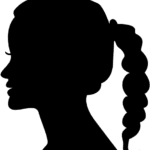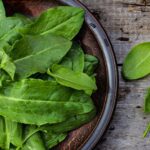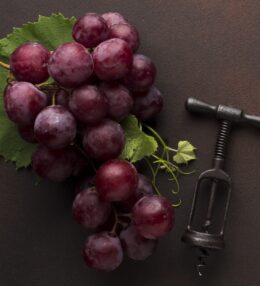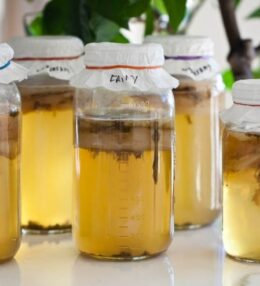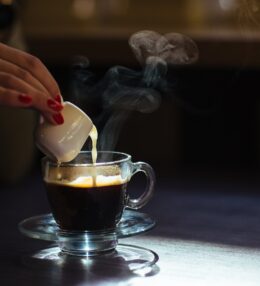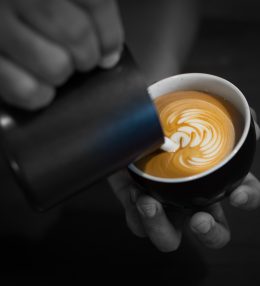Laimes pilnie prieka mirkļi ar Coca-Cola. “Eksperti jau sen ticējuši saiknei starp laimi un labsajūtu, un Coca-Cola lepojas, ka ir piedalījusies laimīgos brīžos visā pasaulē! “
Es melotu, ja teiktu, ka Coca-Cola man negaršo un es to nedzeru. Tā garša, burbulīši un reklāmas nostrādā. Gribas paņem Coca-Colas un veldzēt slāpes.
Liekas, ka visi ir centušies salīdzināt Coca-Cola un Pepsi garšu. Es veicu aptauju savos sociālos tīklos par to, kas kuram labāk garšo, sīvā cīņā, tomēr Coca-Cola garša izrādījās labāka. Vai tā ir, tas lai paliek mūsu pašu ziņā. Es dzeru abus dzērienus. Priecājos, ka ir no kā izvēlēties.
Laimes pilni prieka mirkļi – vai tā tiešām ir, lasām tālāk bloga rakstā…
Coca-Cola
Coca-Cola jeb pilnajā nosaukumā The Coca-Cola Company ir gāzēts dzēriens, kas tiek pārdots veikalos, restorānos, automātos un citur. Mūsdienās tas ir vispopulārākais atspirdzinošais dzēriens pasaulē, un katru dienu to lieto simtiem miljonu cilvēku. Pazīstamā pudeles forma un dzēriena logo ir kļuvuši par vislabāk atpazītajiem tirdzniecības simboliem pasaulē.
Coca-Cola rīkojas, lai uzlabotu cilvēku dzīvi, sākot no darbiniekiem līdz tiem, kas skar tās biznesu, līdz daudzajām kopienām, kuras sauc par mājām.
Coca-Cola izmanto aptuveni 200 zīmolus – sākot no Coca-Cola, līdz “Smartwater”, līdz Costa kafijai.
Tur nav daudz ko piebilst, visi taču zina, kas ir Coca-Cola!
Coca-Cola vēsture
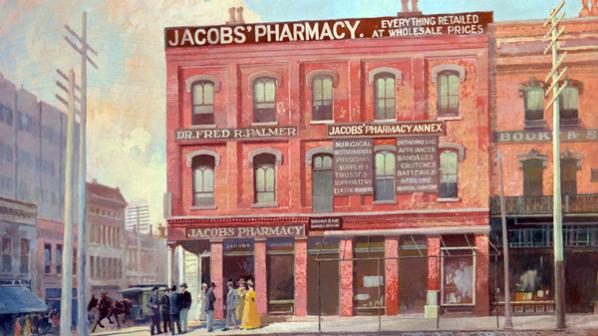
1886. gada 8. maijā doktors Džons Pembertons Džakobsa aptiekā Atlantā (Ga) pasniedza pasaulē pirmo Coca-Cola. No šī ikoniskā dzēriena tā ir pārtapusi par kopēju dzērienu ražošanas uzņēmumu.
Džonu Pembertonu iedvesmoja vienkārša ziņkārība. Kādu pēcpusdienu viņš uzmaisīja smaržīgu, karameļu krāsas šķidrumu un, kad tas bija izdarīts, aiznesa to uz netālo Džeikobsa aptieku.
Šo maisījums jauca ar gāzētu ūdeni, un visi, to nogaršojušie bija vienisprātis, ka šis jaunais dzēriens ir kaut kas īpašs. Džeikoba aptiekā to turpināja pārdot par pieciem centiem (apmēram 0,04 eiro). Laimes pilnie prieka mirkļi ar Coca-Cola.
1888. gadā Dr Pemberton pārdeva Coca-Cola, uzņēmējam Asa G Candler. Neskatoties uz to, ka to izgudroja Džons Pembertons, patiesībā tas bija uzņēmējs, ko sauca Asa Grigss Kendlers, kas atveda Coca-Cola masām. 1888. gadā nopircis Coca-Cola no Pembertonas par 550 ASV dolāriem (421 mārciņa), viņš to agresīvi tirgoja, pretī gūstot miljonus. Saskaņā ar Candler kunga vadību, Coca-Cola izplatīšana tika paplašināta ārpus Atlantas.
1894. gadā, kad palielinājās Coca-Cola pieprasījums un vēlme padarīt dzērienu pārnēsājamu, Joseph Biedenharn uzstādīja pudeļu pildīšanas mašīnu Misisipi. Liela apjoma pudelēs iepildīšana tika veikta tikai piecus gadus vēlāk, kad 1899. gadā parādījās ekskluzīvas tiesības nopirkt Coca-Cola. Trīs uzņēmēji nopērk pārdošanas tiesības no Asa Candlera.
Coca-Cola nosaukums
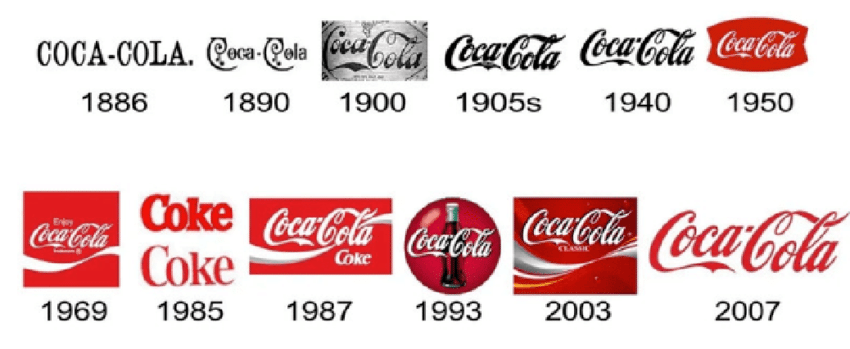
Uzņēmuma grāmatvedis, Frenks Robinsons, nosauca dzērienu par “Coca-Cola”, jo domāja, ka divi C izskatītos labi reklāmās.
Nosaukums Coca-Cola ir dzimis no divām dzēriena sastāvdaļām: kokaīna, kas iegūts no kokauga, un kofeīna no kolas rieksta (aliterācija tika uzskatīta par tirgojamāku). Kopš 1886. gada logotips nav daudz mainījies, izņemot dažus pielāgojumus. Pirmo reizi izmantotais Spencerian fonts joprojām ir redzams mūsdienu dizainā – visievērojamākais papildinājums bija viļņotā pasvītrošana.
Coca-Cola dizaina vēsture
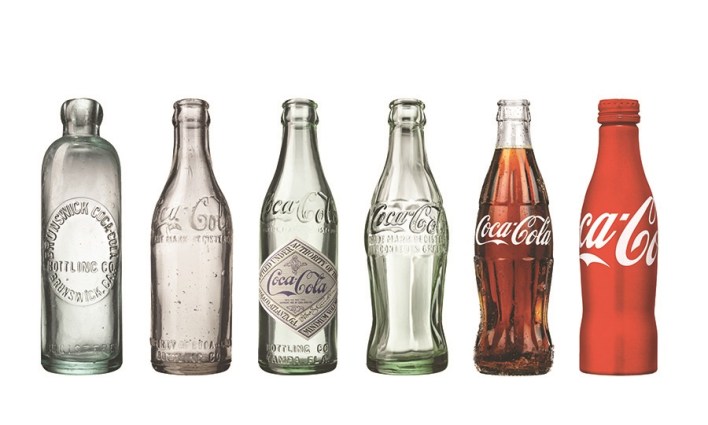
Pudeles dizaina ceļojumi sākās 1915. gadā un, kā pati kompānija saka, tā ir viena no slavenākajām formām pasaulē.
1899. gadā divi Čatanūgas advokāti Džozefs Vaithheds un Bendžamins Tomass devās uz Atlantu, lai risinātu sarunas par Coca-Cola pudelēs iepildīšanas tiesībām. Un Tomass un Vaitsheds vēlējās gūt labumu no dzēriena popularitātes, iepildot to pudelēs, lai to varētu dzert ārpus veikaliem.
The Coca-Cola Bottling Company sāka franšīzes tiesības uz Coca-Cola pudeļu pildīšanu pilsētās visā ASV. Pārdošana gan aparātos, gan pudelēs turpināja pieaugt, un šī popularitāte lika konkurentiem mēģināt atdarināt slaveno Coca-Cola preču zīmi, lai maldinātu sabiedrību iegādāties savus dzērienus.
Tajās dienās izmantotās pudeles bija vienkāršas taisnvirziena pudeles, kas parasti bija brūnas vai dzidras. Coca-Cola uzņēmums pieprasīja, lai pudelīšu pildītāji uz katras pudeles iespiestu slaveno Coca-Cola logotipu. Tomēr konkurentu zīmoli, piemēram, Koka-Nola, Ma Coca-Co, Toka-Cola un pat Koke, Spencerian skripta logotipu kopēja vai tikai nedaudz modificēja. Šīs konkurentu pudeles radīja neskaidrības patērētāju vidū. Kamēr The Coca-Cola Company sāka tiesvedību par šiem pārkāpumiem, lietas bieži prasīja gadus, un pudeļu pildītāji nepārtraukti lūdza lielāku aizsardzību.
Kā pirmo soli pudeļu pildītājiem 1906. gadā The Coca-Cola Company ieviesa dimanta formas etiķeti ar krāsainu preču zīmi, lai izceltu pārkāpējus. Diemžēl Coca-Cola bieži tika pārdota no ledusaukstā ūdens mucām, kuru dēļ etiķetes pazuda.
Coca- Cola pudeles īstais dizains
1915. gada 26. aprīlī Coca-Cola Pudeļu Asociācijas pilnvarotie nobalsoja, ka notiks konkurss pudeļu dizaina izgatavošanā.
Par konkursa uzvarētāju kļuva The Root Glass Company, kas atrodas Terre Haute, Indiānā. Pudeles sīpolu dizains tika veidots pēc kakao pupiņu parauga – sastāvdaļas, kas nepareizi tiek uzskatīta par Coca-Cola.
Interesanti, ka pudeles apakšpusē, vajadzeja iespiest pilsētas nosaukumu, kas veic stikla pasūtījumu. Šie pilsētu nosaukumi izklaidēja patērētājus gadu desmitiem un lika bērniem salīdzināt, kuras pilsētas pudele viņiem ir. Tā noteikti radās kolekcijas.
Zinu, ka arī mūsdienās, ir cilvēki, kas krāj Coca-Cola pudeles no citām valtīm, kur bijuši.
Coca-Cola reklāmas un saukļi
1980. gados parādījās tādi neaizmirstami saukļi kā “Coka it is!”, “Coca-Cola classic” – “Red, White & You” un “Coca-Cola” – “Catch the Wave” (Ķer vilni); “I`d Like to Buy the World a Coke.” (Es vēlo nopirkt pasaulei Coca-Cola.)
1993. gadā Coca-Cola eksperimentēja ar datora animāciju, un populārā “Always Coca-Cola” kampaņa tika uzsākta reklāmu sērijā, kurā bija animācijas polārlāči. Katrai animācijas reklāmai “Always Coca-Cola” (Vienmēr Coca-Cola) sērijā notika no sākuma līdz beigām – 12 nedēļas.
2003. gada janvārī tika ieviests sauklis – “Coca-Cola … Real”(Coca-Cola… Dzīva). Kampaņa un sauklis, savukārt, atspoguļo patiesus, autentiskus dzīves mirkļus un Coca-Cola dabisko lomu tajos.
2009. gadā tika atklāta kampaņa “Open Happiness” (Atver laimi), galvenais ziņojums ir aicinājums visā pasaulē mijiedarboties, lai apstātos, atsvaidzinātos ar Coca-Cola un turpinātu baudīt kādu no vienkāršiem dzīves priekiem. “Open Happines” tika rādīta veikalos, reklāmas stendos, televīzijas vietnēs un drukātajā reklāmā kopā ar digitālajām un mūzikas komponentiem.
…………
“Open Happiness” tika demonstrēta Vankūveras 2010. gada ziemas olimpiskajās spēlēs, kam sekoja 2010. gada sociālā plašsaziņas līdzekļu paplašināšana – ” Expedition 206 “, iniciatīva, saskaņā ar kuru trīs laimes vēstnieki ceļo uz 206 valstīm, 365 dienu laikā ar vienu uzdevumu: noteikt, kas padara cilvēkus laimīgus.
Katru gadu ir kāds bērns, kas gaida Coca-Cola reklāmas un akcijas, – pudelīti zem korķīša, bantītes siešana un Coca-Cola karavānu. Pirmie kravas automobiļi, Coca-Cola karavāna, nebija pat reāla. Tā bija reklāma, kuru 1995. gadā izveidoja Amerikas aģentūra W.B. Doner un Featured.
2001. gads: vairs nav tikai reklāma. Pēc daudziem ikmēneša reklāmu gadiem, Ziemassvētku karavāna kļuva reāla, sākot ar īstu ceļojumu ASV. “Ziemassvētki ir ģimenes sezona, un tieši tas ir “Karavāna” reklāmu gars,” teica Coca-Cola darbinieks Teds Rjans.
2010. gadā Lielbritānija iegūst savu karavānu. Autovadītāju ceļojums debitēja Lielbritānijā pēc tam, kad Vācijā un visā Eiropā bija veiksmīga pieredze. Miljoniem cilvēku ir sekojuši ceļojumam, sākot no ciemiem uz piejūras pilsētām.
2017. gadā pēc vairāk nekā miljonu kilometru brauciena un vairāk nekā 300 pieturu braucieniem visā pasaulē, pirmā Coca-Cola Ziemassvētku Kravas automašīna sāk savu pirmo braucienu pa Austrāliju.
Citi saukļi un reklāmas
1886 – Drink Coca-Cola
1904 – Delicious and Refreshing
1905 – Coca-Cola Revives and Sustains
1906 – The Great National Temperance Beverage
1922 – Thirst Knows No Season
1923 – Enjoy Thirst
1924 – Refresh Yourself
1926 – It Had to Be Good to Get Where It Is
1927 – Around the Corner from Everywhere
1929 – The Pause that Refreshes
1932 – Ice Cold Sunshine
1938 – The Best Friend Thirst Ever Had
1939 – Thirst Asks Nothing More
1939 – Whoever You Are, Whatever You Do, Wherever You May Be, When You Think of Refreshment Think of Ice Cold Coca-Cola
1942 – The Only Thing Like Coca-Cola is Coca-Cola Itself
1948 – Where There’s Coke There’s Hospitality
1949 – Along the Highway to Anywhere
1952 – What You Want is a Coke
1956 – Coca-Cola… Makes Good Things Taste Better
1957 – Sign of Good Taste
1958 – The Cold, Crisp Taste of Coke
1959 – Be Really Refreshed
1963 – Things Go Better with Coke
1969 – It’s the Real Thing
1971 – I’d Like to Buy the World a Coke (part of the “It’s the Real Thing” campaign)
1976 – Coke Adds Life
1979 – Have a Coke and a Smile
1982 – Coke Is It!
1985 – We’ve Got a Taste for You (for both Coca-Cola & Coca-Cola classic)
1986 – Red, White & You (for Coca-Cola classic)
1986 – Catch the Wave (for Coca-Cola)
1988 – You Can’t Beat the Feeling
1989 – Official Soft Drink of Summer
1990 – You Can’t Beat the Real Thing
1993 – Always Coca-Cola
2000 – Coca-Cola. Enjoy
2001 – Life Tastes Good
2003 – Coca-Cola… Real
2005 – Make It Real
Laimes pilnie prieka mirkļi ar Coca-Cola garšu –

Coca-Cola recepte ir cieši apsargāts noslēpums, sakot, ka tā ir ieslēgta augstas drošības glabātavā Atlantā. Bet 2011. gadā tika publicēta recepte, kas, bija itkā 130 gadus vecā piezīmju grāmatiņā, kas pieder izgudrotāja labākajam draugam. Dzēriena 15 sastāvdaļas ietver kanēli, neroli, koriandru un muskatriekstu eļļu. Coca-Cola uzstāja, ka tā bija veca recepte.
Bet, vai tad vienmēr viss ir jāzina? Ja visi dzer un garšo, tad pārējais, var jau palikt ar nezināms.
Bet, kādas garšas ir/bija Coca-Cola?
- Coca-Cola Energy
- Coca-Cola Energy Zero Sugar
- Coca-Cola Life
- Coca-Cola Zero Sugar
- Coca-Cola Vanilla
- Coca-Cola Cherry
- Coca-Cola Orange Vanilla
- Diet Coke
- Coca-Cola Zero Sugar Orange Vanilla
- Coca-Cola with Coffee
- Coca-Cola with Lemon
- Coca-Cola Light Sango
- Coca-Cola Raspberry
- Coca-Cola Orange
- Coca-Cola Lime
- Coca-Cola Ginger
Interesanti fakti par Coca-Cola
- Kādreiz Coca-Cola tika izsniegta bez maksas. Viens no pirmajiem Džona Pembertona mārketinga centieniem bija dāvināt kuponus. Laika posmā no 1886. līdz 1913. gadam katrs devītais amerikānis saņēma bezmaksas Coca-Cola paraugu. Laimes pilnie prieka mirkļi ar Coca-Cola.
- Kā daļu no mārketinga stratēģijas, lai Coca-Cola šķiet labāka par konkurentiem, uzņēmums paziņoja, ka dzēriena pasniegšanai ir ideāla temperatūra: no 1 ° C līdz 3,3 ° C. 1919. gadā kompānija pat nosūtīja pārdevējus pie jauniem mazumtirgotājiem, lai tie ievērotu šos standartus.
- Coca-Cola, iespējams, ir izgudrojusi daudzpakas. Coca-Cola bija ne tikai viens no pirmajiem zīmoliem, kas izstrādāja mūsdienīgu veidu, kā pildīt savu produktu pudelēs, bet arī agri ieviesa vairākus iepakojumus. Pamanot tendenci, ka pircēji pērk vairāk nekā vienu pudeli vienlaikus, 1923. gadā tā ieviesa sešpaku, lai patērētāji varētu nest vairākas stikla pudeles mājās, tās nesaplēšot.
- Coca-Cola bija pirmais Olimpisko spēļu sponsors. Coca-Cola sponsorēja Vasaras Olimpiskās spēlēs, kas notika Amsterdamā 1928. gadā. Attēlā redzams Coca-Cola stends Vemblija stadionā, Londonā, olimpisko spēļu laikā 1948. gada augusts.
………..
- Karaspēkam tika nosūtīta Coca-Cola kā ļoti svarīga lieta. ASV karaspēkam tika izdalīti vairāk nekā 5 miljardi pudeļu. Pārnēsājamās soda strūklakas tika pat aizvestas uz nomaļiem Klusā okeāna dienvidu rajoniem.
- Coca-Cola palīdzēja McDonald’s izaug. Vēloties kļūt par lielāko ātrās ēdināšanas ķēdi Amerikā, McDonald’s vadītājs Rejs Kroks 1955. gadā vērsās pie Coca-Cola, lai izveidotu partnerību ar jau labi izveidoto sodas zīmolu. McDonald’s tagad ir lielākais Coca-Cola klients. Attēlā redzama McDonald’s reklāma no 1975. Gada.
- Coca-Cola bija viens no pirmajiem zīmoliem, kas mainīja pudeles izmēru.
- Coca-Cola savulaik mēģināja aizstāt kafiju. 80. gados zīmols mēģināja pārliecināt cilvēkus, ka rīta kafiju janomaina pret vēsu un gāzētu kofeīna fiksāciju.Tomēr kampaņa neizdevās.
- Coca-Cola bija pirmais bezalkoholiskais dzēriens, kas tika lietots kosmosā.
- Coca-Cola ir universāla valoda. Coca-Cola apgalvo, ka tās nosaukums ir otrs saprotamākais termins pasaulē, un vairāk nekā 94% cilvēku to atzīst. Galvenais termins ir “Okey”.
- Pirmais Coca-Cola garša bija sarkanvīns, kas sajaukts ar kokaīnu. Pembertona iedvesma dzērienam bija Francijā izgudrots populārs sacerējums ar nosaukumu Vin Mariani. Tas bija Bordo sarkanvīna un kokaīna maisījums. 1895. Gadā, tas tika tirgots kā toniks, kas “stiprina un atsvaidzina ķermeni un smadzenes”. Tomēr ASV, it īpaši dziļie dienvidi, atradās pretalkohola kustības vidū. Tas radīja Pembertonam ideju izveidot dzērienu tiem, kuri “atturējās”.
Es un Tu noteikti zini, ka Coca-Cola noteikti nav veselīgākais, ko es te runāju, veselīgs dzēriens. Tā domā daudzi, bet tāpat to lieto. Un lieto to ne tikai dzeršanai, bet arī rūsas, pat kanalizācijas tīrīšanai utt. Man pašai liekas, ka dari, ko gribi, bet tā ir garša, ko nevar aizmirst!
“Neatkarīgi no tā, kāds tu esi, ko tu dari, lai kur tu atrastos, kad domā par atspirdzinājumu, padomā par ledus aukstu Coca-Cola”
/Coca-Cola/
Citus interesantus bloga rakstus vari lasīt ŠEIT.
